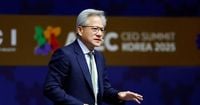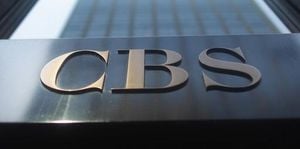On October 30, 2025, a notable handshake between U.S. President Donald Trump and Chinese President Xi Jinping in Busan, South Korea, captured the world’s attention. The moment, immortalized by photographers as the two leaders departed their meeting, was expected by many to signal a turning point in the ongoing technology and trade tensions between the two economic giants. Yet, as the dust settled, the summit’s impact—especially regarding the fate of American tech companies in China—remained far from clear.
According to Bloomberg, the Trump-Xi meeting was widely anticipated as a chance to address major sticking points in the tech sector, particularly the future of Nvidia’s advanced semiconductor sales in China and the survival of TikTok in the U.S. However, the discussions, while cordial, did not result in any breakthrough agreements or clear policy shifts. As Alexandra Levine reported, the summit was considered "less than pivotal for the TikTok deal," leaving the popular social media platform’s fate in limbo.
For Nvidia, the Silicon Valley chip-making giant at the center of the U.S.-China tech conflict, the outcome was especially ambiguous. Jensen Huang, Nvidia’s CEO, arrived in South Korea shortly after the summit and addressed the media on October 31. Huang admitted, "I don’t have any new insight from the meeting," and continued, "I hope that we will have new policies that allow Nvidia to go back into China, for China to welcome Nvidia back." His comments, reported by The New York Times, echoed the uncertainty felt by many in the tech industry, who had hoped for tangible progress on easing export restrictions.
President Trump had fueled speculation in the days leading up to the summit by suggesting he would discuss Nvidia’s most powerful artificial intelligence (AI) semiconductors with President Xi. This raised hopes that the United States might relax some of the stringent export controls that have kept Nvidia’s cutting-edge chips out of China. However, after the meeting, Trump told reporters only that Chinese officials would talk to Nvidia about "taking chips," with the U.S. acting as a "referee." The ambiguous remarks left industry watchers and Nvidia executives scratching their heads, unsure if any real progress had been made.
The stakes for Nvidia are enormous. Once commanding nearly the entire Chinese market for high-end AI chips, the company now finds its business in China at "zero," as Huang bluntly put it. The company’s troubles began before the Trump administration, when the U.S. government imposed rules limiting the sale of Nvidia’s most advanced chips to China. The Trump administration took things further, initially banning exports of the H20 chip—a downgraded version of Nvidia’s Hopper chips designed specifically for the Chinese market. In a surprising reversal in July 2025, Trump announced that the H20 chip could be sold to China, provided the federal government received a 15 percent cut of the revenue.
But Nvidia’s hopes for a swift return to the Chinese market were dashed when Beijing pushed back. In July, China’s internet regulator summoned Nvidia to explain security risks associated with the H20 chip and discouraged domestic companies from purchasing it, urging them to seek homegrown alternatives. As a result, Nvidia’s once-lucrative business in China ground to a halt, and the company found itself caught in the crossfire of a broader geopolitical and technological rivalry.
At his news conference on October 31, Huang reiterated his longstanding arguments for why the U.S. should reconsider its strict export controls. He insisted that some American national security concerns were "overblown" and argued, "The Chinese military does not need Nvidia’s chips to develop A.I. technology." Huang warned that by shutting itself out of the vast Chinese market, the United States risked conceding leadership in one of the most transformative technological arenas of the era. "It’s critically important for America to be back in the China market," Huang said. "As an American company, we would like to see American A.I. technology be the global standard."
Huang was careful to avoid direct criticism of Chinese tech giant Huawei, which has made significant strides in developing its own AI semiconductor technology. Still, he emphasized Nvidia’s edge, stating, "We are miles ahead, but it is foolish to underestimate the might of China." His remarks underscored the delicate balance that American tech firms must strike as they navigate the competing pressures of national security, commercial opportunity, and international diplomacy.
While Nvidia’s China prospects remained uncertain, the company scored a significant win in South Korea. During his visit, Huang met with Samsung Electronics’ executive chairman Lee Jae-yong and Hyundai Motor Group’s executive chairman Euisun Chung. The meetings, covered with paparazzi-like enthusiasm, culminated in a major announcement: South Korea and leading firms including Samsung and Hyundai Motor had agreed to purchase more than 250,000 of Nvidia’s specialized computing chips. According to The New York Times, these chips will power next-generation data centers and advance South Korea’s ambitious "sovereign AI" initiative—a national effort to make cutting-edge AI technology accessible to local businesses and institutions unable to build their own infrastructure.
The deal, unveiled at the Asia Pacific Economic Cooperation summit, was a bright spot for Nvidia amid its China woes. Huang, ever the showman, ditched his trademark black leather jacket for a navy blue suit during his highly anticipated summit speech. Later, he handed out snacks to journalists and even signed a reporter’s white dress shirt with a black marker, as swarms of reporters clamored for selfies with the charismatic CEO. Despite the celebratory mood in Seoul, the specter of the U.S.-China tech standoff loomed large over Nvidia’s future.
Meanwhile, other American tech giants were also watching developments in Asia closely. Apple, for instance, predicted a major boost in holiday season sales thanks to its new iPhone 17 models. CEO Tim Cook expressed confidence that sales in China would rebound from a recent slump, signaling the ongoing importance of the Chinese market for U.S. technology firms despite current headwinds.
As the world’s two largest economies continue to spar over technology and trade, the fate of companies like Nvidia hangs in the balance. For now, the handshake in Busan may have been more symbolic than substantive, but it served as a reminder of how intertwined—and fraught—the global tech landscape has become. With billions of dollars and technological leadership at stake, the next moves from Washington, Beijing, and Silicon Valley will be watched with bated breath.
For Nvidia, Apple, and countless others, the path forward remains uncertain. But as Jensen Huang’s whirlwind trip to South Korea showed, opportunities still abound for those nimble enough to seize them—even as the world’s superpowers continue their high-stakes game of technological brinkmanship.




